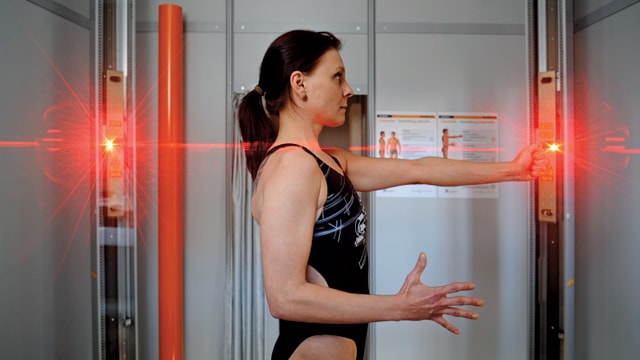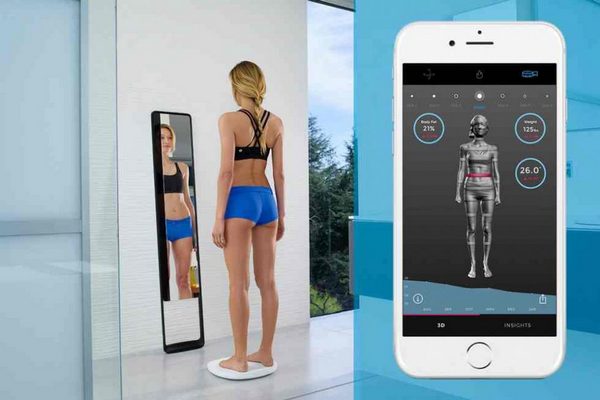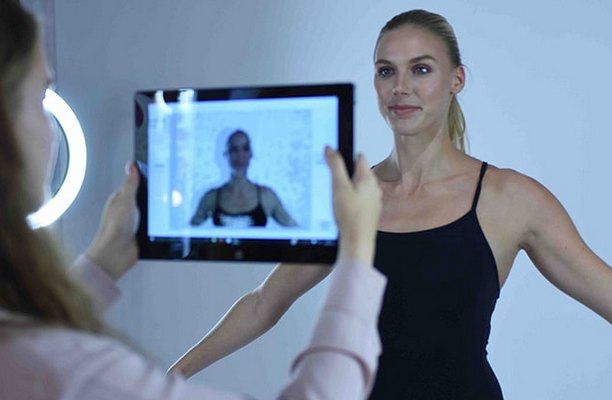Introduction
3D Body scanning is a technology that produces a 3D model through scanning. An individual stands in the scannersview, while it captures his body image and produces 3D images within seconds.The scanner uses a series of light sensors to produce a 3D image. 3D body scanning was introduced almost 30 years ago and was firstly introduced in the movie industry in the film Terminator 2 in 1991 when only computer graphics was not acceptable and there was a need for reality. It has started exploring its way in many industries like medical, military, textile, aeronautics, and many more.In the apparel and clothing industry, in the beginning it was only introduced for military purposes and mostly for ergonomics. But after carrying out various experiments it was used in various retail shops, boutiques, etc.Today I will discuss on 3D body scanning design in apparel industry.
1. Development of 3D Body Scanning Technology
In the apparel industry, fit is given utmost importance. This was recognized when a team of astronauts had to cancel their spacewalk planned by NASA as a woman could not find a perfect fit spacesuit. It is a sole job of designer to add movement data into patterns while designing performance garments. And that is why measurements are considered as fundamentals for clothing producers as well as buyers.
1.1 First 3D Scanner :
The first scanner was developed by CAESAR (Civilian American &European Surface Anthropometry Research Project). It was a very complex scanner weighing about 450kg and costing around US$350,000. This scanner is considered as complex as it took various scans for lighting scheme, coloring scheme, landmark detection scheme, and many more and it took about a week to collaborate all the scans together and get the final scan.
1.2 Portable Scanner :
Somewhere around 2000 a German based company ViaLux Germany produced BodyLux Scanner which was portable and comparatively cheaper. It is a combination of Micromirror projection and phase encoded photography. And one of the major advantages over complex scanners was it almost took 50 sec to give the final output scans and also doesn’t require special clothing. And also it was beneficial as it only weighs somewhere around 35kg and costs upto US$22,000. Also, it helped in calculations related to tailoring.
1.3 Further Development :
Further development in 3D body scanner was brought up by Artec3D, Luxembourg which developed the scanner ArtecEva in 2017 which weighed less than 1 kg and costing was around US$20,000 and are called as Handheld scanners. With Booth type (static) scanners, sometimes it was difficult to measure parts especially for pressure garments. So it helped in measuring different body parts for Pressure garments. But these types of scanners are still new in the market.

2. Types of 3D Body Scanning:
There are 3 types of 3D Body Scanner. They are :
a)Light based System
b)Laser based System
c)Microwave based System
2.1 Light Based System :
There are 3 types of Light Based System:
a)Shadow Scanning
b)White Light Scanning System
c)Light Emitting Diodes
a) Shadow Scanning System-
In Shadow scanning system one’s shadow is scanned; so there is no effect due to skin color.It only requires a Camera, desk-lamp, pencil and a board with a grid. There is a screen faced by a camera illuminated by a halogen desk lamp. It can be turned 360°and also has an automated computerized 3D measurement system based on a triangulation system.
b) White Light Scanning System-
White light scanning system uses PMP (Phase Measuring Projection) technique. It has CCD which is linked to computer which detects body and deformed light strip is formed. An output is given from each view and has to be collaborated together to get the final output. Each view is combined with the exact view of another for exact orientation while collaborating. Final output is generated after processing it with filtering, smoothing, compressing, etc.
c) Light Emitting Diodes-
In this process, light is reflected from one object and collected in a detector lens. It uses InfraRed Light Emitting Diodes to obtain data. It gives the widest dispersion of the measurement values and thus larger circumference measurements can also be produced using the method.
2.2 Laser Based System :
In this system various scan heads are placed and there is projection of laser lights on the body. And these projections are reflected into cameras located in scan heads.It gives colour coded landmarks for data extraction by using RGB colour values. It is highly versatile and manufactured as a portable tool for accurate scientific application.
2.3 Microwave Based Study :
It was developed by Pacific Northwest National Lab for the US Department of Energy for various materials and it was also tried for apparel and was found out to be successful. It rotates in 360° and gives the final output in less than 10 seconds and results in a high resolution 3D image and hence considered as one of the advanced systems from all of the above.

3. Advantages of 3D Body Scanning Technology
Speed– Scanning is much faster than that of the traditional measurement tapes.
Accurate– As there is a reduction in many body movements, there are less chances of error and hence more accurate than that of traditional one.
Ease to tailor– Tailor can easily extract any measurement as there are infinite no. of measurements available and at any time.
Ease to consumer– In future, it will be very easy for consumers to produce custom-fit garments once they have all their measurements after scanning.
4. Disadvantages of 3D Body Scanning Technology
Obstruction– Hair can obstruct the measurements of neck and shoulder.
Effect due to apparels– Reflections may vary due to apparels’ fold. Light scanning technology and laser based systems have effects due to apparels. Loose garments may produce large measurements and too tight garments may produce shorter measurements than they are.
Invisibility of parts– Many parts are not visible by vision devices such as top of the shoulder, top of neck, crotch, etc.
Cost– More sophisticated the system, the more cost is. Hence this system are more costly than manual measurements system
Conclusion
Overall, 3D body scanning have significantly impacted the textile and fashion industry by improving the accuracy of measurements, enhancing the customer experience, and promoting sustainability in clothing production.It has shown a great potential in the apparel industry. It provides tools to create better fit of clothing and has even lead to development of other related technologies and all of them are obviously helping in the development of a particular product in a better way. As this technology continues to advance, it is expected to further revolutionize the way clothing is designed, produced, and consumed.
Tillotama Karishma Kundu
Bangladesh Home Economics College


